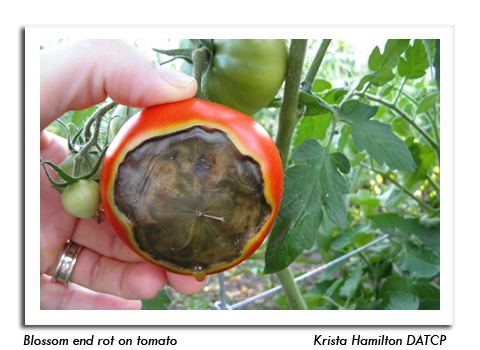
 |
|
|
Vegetables
Volume 57 Number 15 Date 07/26/2012 BLOSSOM END ROT - This physiological disorder of tomatoes, peppers, watermelons and squash is prevalent in commercial and home gardens, according to grower reports. The dark, water-soaked spot that starts at the blossom end of the fruit and enlarges around the fruit surface is caused by calcium deficiency or inconsistent soil moisture levels. Since this disease is physiological in nature, fungicides and insecticides are useless as control measures. Adjusting calcium levels in spring and maintaining even soil moisture levels throughout the season will usually limit its development. Mulching is advised to maintain consistent moisture levels. ONION MAGGOT - The third generation of flies should begin appearing in the southeastern and central counties next week, following the passage of 3,230 degree days (base 40°F). As mentioned in last week's issue, this third and final generation eventually overwinters as pupae in cull onions or bulbs left behind in fields. Thorough field sanitation and rotating to a non-crop host are the recommended controls for growers with a history of onion maggot problems. On a positive note, larval populations could be reduced next spring due to this year's hot, dry weather pattern. The onion maggot cannot survive in dry soils. CABBAGE CATERPILLARS - Populations of cabbage loopers, diamondback moths and imported cabbageworms are reportedly high in southern Wisconsin cabbage plantings. The larvae of these cabbage pests initially feed on leaves, causing large ragged holes, and eventually move to the center of the plant to infest the developing heads of broccoli, cabbage and cauliflower. Treatment thresholds are reached when 10% of cabbage in the early heading to mature head stages are infested or 10% of broccoli and cauliflower in the first flower or curd to maturity phase are affected. Bacillus thuringiensis (Bt) and chemical insecticides are the most effective forms of control. --Clarissa Hammond, DATCP Pest Survey Program 



|
|
|